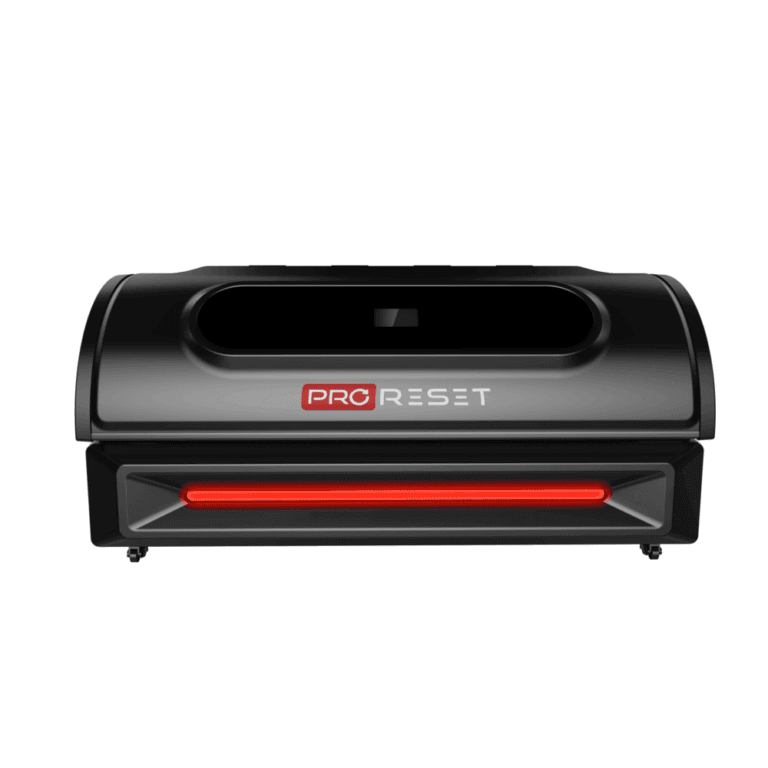In recent years, red light therapy (RLT) has gained popularity as a non-invasive and natural way to improve skin health, alleviate pain, and promote overall well-being. But is this just another wellness trend, or does the science back it up? Let’s take a deep dive into the benefits of red light therapy, how it works, and why it might be worth considering for your skincare and pain management routine.
What is Red Light Therapy?
Red light therapy, also known as low-level laser therapy (LLLT) or photobiomodulation (PBM), uses specific wavelengths of red and near-infrared (NIR) light to penetrate the skin and stimulate cellular activity. Unlike ultraviolet (UV) rays from the sun, which can damage skin cells, red light therapy works at a therapeutic level, encouraging healing and regeneration without harmful effects.

ProReset Xenolight
How Does Red Light Therapy Work?
At a cellular level, red light therapy enhances the function of mitochondria, often referred to as the powerhouse of the cell. By improving mitochondrial activity, red light helps boost the production of adenosine triphosphate (ATP), the energy currency of cells. This increase in energy enhances cell repair, reduces inflammation, and stimulates collagen production, making it beneficial for both skin health and pain relief.
Benefits of Red Light Therapy
- Skin Rejuvenation and Anti-Aging: One of the most well-known benefits of red light therapy is its ability to improve skin appearance. It helps reduce wrinkles, fine lines, and age spots by promoting collagen and elastin production. Studies have shown that regular use of RLT can lead to firmer, smoother skin with improved elasticity.
- Wound Healing and Scar Reduction: Red light therapy accelerates the body’s natural healing process by increasing circulation and reducing oxidative stress. It has been used effectively to speed up wound healing, minimize scarring, and even improve the appearance of stretch marks.
- Pain Relief and Inflammation Reduction: Chronic pain sufferers, including those with arthritis, fibromyalgia, and muscle soreness, have found relief with red light therapy. The treatment reduces inflammation, improves blood flow, and relaxes muscles, making it an effective natural pain management tool.
- Hair Growth Stimulation: Studies suggest that red light therapy can help with hair regrowth by stimulating hair follicles and increasing blood circulation in the scalp. This makes it a potential treatment for individuals experiencing hair thinning or male and female pattern baldness.
- Improved Muscle Recovery and Performance: Athletes and fitness enthusiasts use red light therapy to enhance muscle recovery, reduce soreness, and improve performance. By reducing oxidative stress and inflammation, RLT aids in quicker recovery after intense workouts.
How to Use Red Light Therapy Safely?
Red light therapy devices come in various forms, including handheld devices, light panels, and full-body beds. To achieve the best results:
Consistency is key: Most studies suggest using red light therapy 3-5 times per week for noticeable improvements.
Choose the right wavelength: Wavelengths between 600-850 nanometers are considered most effective for skin health and pain relief.
Follow manufacturer guidelines: Overuse can lead to diminishing returns, so it’s best to adhere to recommended treatment durations.
Is Red Light Therapy Right for You?
While red light therapy has numerous benefits, results can vary from person to person. It is generally safe with minimal side effects, but if you have underlying medical conditions, it’s always a good idea to consult a healthcare professional before starting any new treatment.
Red light therapy offers a promising, natural way to rejuvenate the skin and relieve pain without invasive procedures or harsh chemicals. Whether you’re looking to enhance your skincare routine, manage chronic pain, or speed up muscle recovery, RLT might be a worthwhile addition to your wellness regimen. With growing scientific support and increasing accessibility, it’s an option worth exploring for anyone interested in natural healing and self-care.